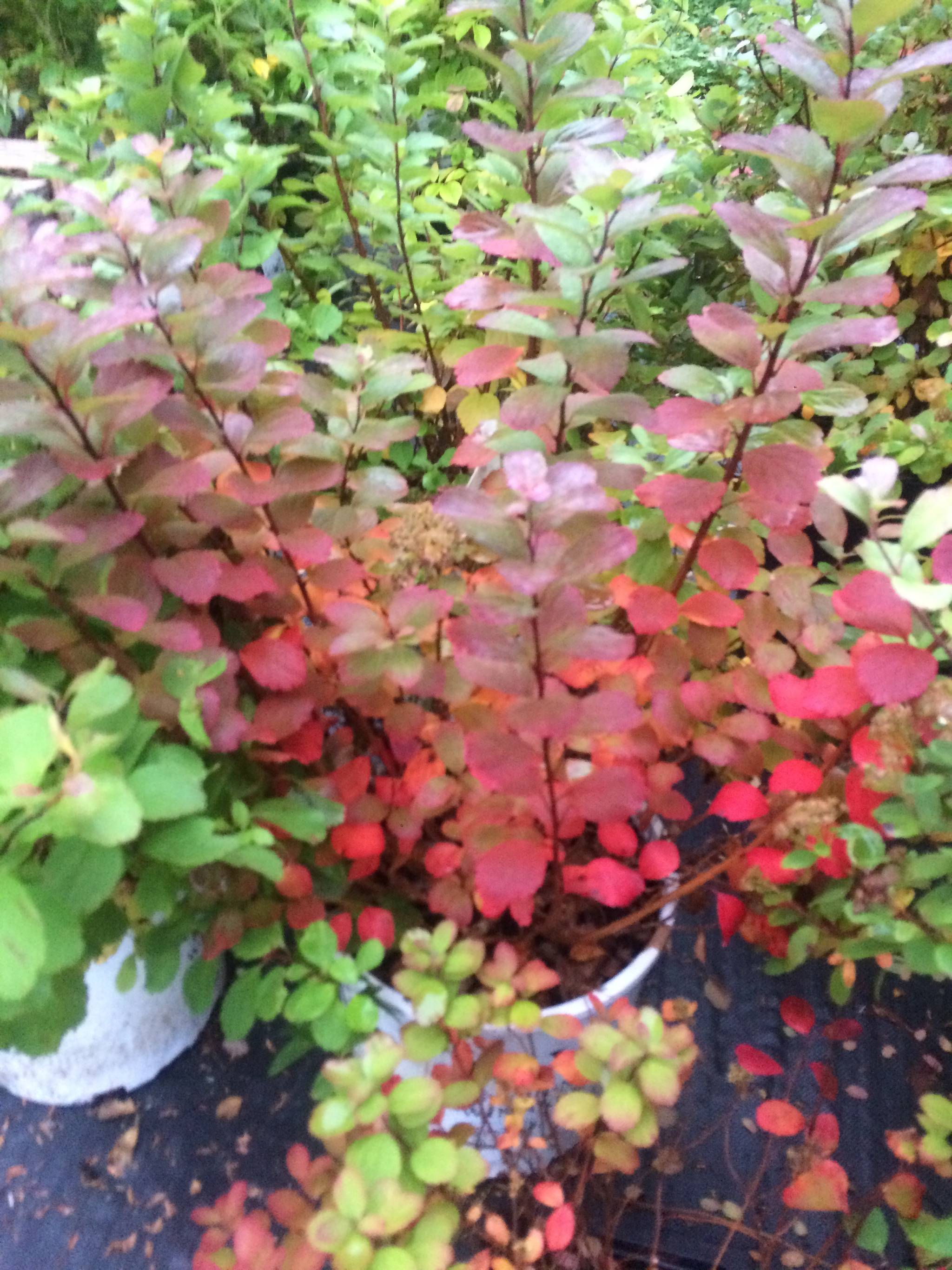The turn of seasons that the weather tells us is here brings with it a whole list of desirable actions for the garden. It’s time to get ready for spring; fertilizing perennials and shrubbery, cleaning out spent annuals, emptying the hanging baskets and planters, if you are one of those who dump out your soil to save it for reuse next year be sure to remove all roots, bulbs, and any egg clusters you find.
Look at your landscape layout and see if you want to add more shrubbery, remember that flowering shrubs make up the lowest maintenance portion of your yard. The more area you plant with shrubbery, the less weeding you will be faced with next year. There are still a couple of good months of planting weather before end of the season, and if you plant now, the roots will be growing into the soil even after the leaves drop. Good choices for this use include dwarf Rhododendrons like “Ramapo” and “Baden Baden,” Spiraeas like ”Goldmound,” “Little Princess,” “Tor” and “Glowgirl,” Dwarf Hydrangea “Little Quickfire” and Japanese Yews for a nice evergreen element.
Trimming back flowering shrubbery at this time will mean a lot less work when the weather is even less conducive, when it’s really raining sideways. Shrubs blooming on the wood that grows this season like Spiraeas, Roses, Ninebarks, Potentillas and Hydrangeas can be trimmed back as far as you like, we often cut them back to small bunches of stems in the fall, and let them regrow a whole new top each season. This way they stay vigorous and full to the ground rather than being all sticks and twigs.
Rugosa Roses form a major part of many Southeast landscapes. These are the “Sitka” roses and similar varieties. They are among the toughest and most rewarding of all shrubs for our zone. When pruning them you begin at the bottom, removing any of the big old canes that are dead, dying, diseased, or crossing over another branch. This will open up the center of the shrub, allowing more air circulation, while encouraging regrowth of newer, more flower-producing canes. The new canes emerge from the root system in the wild forms, and from low down on the branches in the more developed forms like “Hansa.”
Colors that show up in the fall are really dramatic, when the golds, pinks, and purples begin to appear, it’s like another whole landscape appears. Shrubs and trees that were delightfully green, serving as background to the flowering perennials or Rhododendrons, move to center stage. They burst into our visual experience, as they are transformed into veritable peacocks, waving their brilliantly colored foliage like banners. Local favorites include the “Miss Kim” dwarf Korean Lilac, all the Exbury Hybrid Azaleas, the ubiquitous Red Stemmed Dogwoods including the silver edged and golden forms, and the newer forms of Hydrangea. Don’t forget all the various Maples we can grow, or those brilliantly yellow Green Ash trees at the edge of Marine Park.
Look around in your neighborhood for some of these seasonal surprises, they may become your new additions. It’s always nice to extend the season by adding some earlier blooming specimens, or by reaching out with fall colored foliage.
Lawns too have some needs, make sure they have a fall fertilization and as long as you’re feeding the grass, use a fertilizer that suppresses the moss over the winter. We use Turfbuilder with Moss Control, or if that is unavailable you can apply a dose of Iron Sulfate (“Moss Out”) at half strength. It will slow the moss and at the same time make the grass a deeper green. Use this time to put a new edge on the grass, and when you do remember to bevel it back so the grass roots do not spread into the adjacent beds. A nice lawn is really beautiful, but an unruly one that invades the flower beds is like an untrained dog, always calling for control and discipline. It’s so much easier to keep the lawn edged than to go back and pull the turf up out of the no grow zones.
Fruiting trees and bushes can be plated now for next spring and summer’s harvest. Good choices include the “Montmorency” Cherries, “Yellow Transparent” Apples, and all the fruitfull Gooseberries and Currants. For established trees and plants a 1 inch mulch of composted manure and an application of slow release fertilizer so the spring blooms are well nourished is really helpful.
• David Lendrum and Margaret Tharp operate Landscape Alaska, a nursery and landscape business located on the Back Loop Road in Juneau. Visit their website at www.landscapealaska.com, or reach them at landscapealaska@gmail.com. This column “Landscape Alaska” appears every other week.

